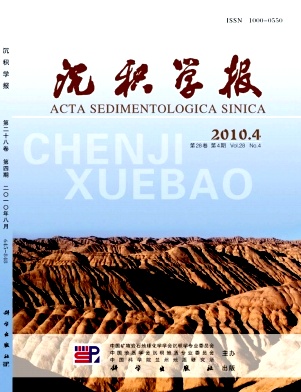Paleolake Evolution of Eocene in Fushun Basin
- Received Date: 1900-01-01
- Rev Recd Date: 1900-01-01
- Publish Date: 2010-08-10
-
Key words:
- Fushun Basin
Abstract: In order to interpret continental responses to globally climatic cooling in the EoceneOligocene, we have studied the paleolake features of Fushun Basin, an Eocene faultdepression basin in NE China, through measuring actual strata profiles in the fields and indoor sample testing. The analysis of rock facies, facies indicators and rock thinsections suggests the evolution history of sedimentary facies in Eocene, Fushun Basin. Sedimentary subfacies vary as: lake and marshlandshallow lacustrinehalf deep lacustrinedeep lacustrine half deep lacustrineshallow lacustrine, with the water depth varying as: shallowdeepshallow. On the basis of contents of trace elements (B, Mn, Ti, Co, Cr, Ni, V), element contents ratios (Sr/Ba, V/(V+Ni), Ni/ Co, ωFe2O3/ωFeO) and ratios of oxides, we point out that there was an abrupt climatic change from early Eocene to late Eocene in Fushun Basin. In the early Eocene, climate was moisture and good for coral forming. While, in the middlelate Eocene, climate changed into drier and made contribution into the interbedding between marlite forming in saline and halfsaline water and clay shale. In general, our study shows that the climate changed from moisture to dry in EoceneOligocene.
| Citation: | LIU Rong. Paleolake Evolution of Eocene in Fushun Basin[J]. Acta Sedimentologica Sinica, 2010, 28(4): 688-695. |






 DownLoad:
DownLoad: